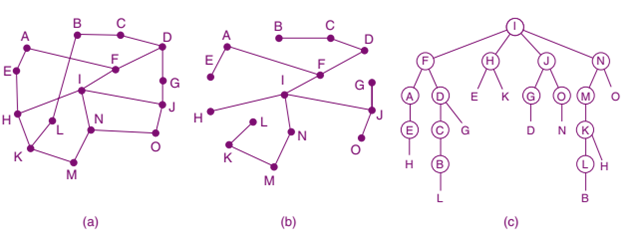Broadcast in Networking
In various applications, hosts often need to send messages to multiple or all other hosts simultaneously. This is particularly useful for services that distribute information such as weather reports, stock market updates, or live radio programs. The process of sending a packet to all destinations at once is known as broadcasting. This article explores different methods of broadcasting and their efficiencies.

Traditional Broadcasting Methods
1.Direct Packet Sending
One straightforward method of broadcasting is for the source to send a distinct packet to each destination. While this approach is simple, it has significant drawbacks:
→ Bandwidth Waste: Sending individual packets to each destination consumes a lot of bandwidth.
→ Slow Performance: The process can be slow, especially in large networks.
→ Complete Destination List Required: The source must maintain a complete list of all potential destinations, which is impractical in many scenarios.
Due to these limitations, this method is generally not favored in practice, despite its broad applicability.
2.Multidestination Routing
An improvement over direct packet sending is multi destination routing. In this method:
→ Each packet contains either a list of destinations or a bitmap indicating the desired recipients.
→ When a packet arrives at a router, the router checks the destinations and determines which output lines are needed.
→ The router then generates a new copy of the packet for each output line, including only the relevant destinations.
While multi destination routing is more efficient than sending individual packets, it still requires the source to know all destinations and can be as resource-intensive for routers as handling multiple distinct packets.
Advanced Broadcasting Techniques
3.Flooding
Flooding is a more efficient broadcasting technique that utilizes a simple decision rule at routers. When a broadcast packet is sent, it is forwarded to all neighboring routers. Although flooding can lead to network congestion, it is effective for broadcasting since it does not require prior knowledge of the network topology.
4.Reverse Path Forwarding (RPF)
Reverse Path Forwarding, introduced by Dalal and Metcalfe in 1978, is an elegant and efficient broadcasting method. Here’s how it works:
→ When a broadcast packet arrives at a router, the router checks if it arrived on the preferred link (the link typically used to send packets toward the source).
→ If it did, the router forwards the packet to all other links except the one it arrived on.
→ If it arrived on a different link, the packet is discarded as a likely duplicate.
This method ensures that each broadcast packet is sent over each link only once, making it efficient while requiring minimal router memory.
5.Using Spanning Trees
The most efficient broadcasting method leverages a spanning tree. A spanning tree is a subset of the network that includes all routers without any loops. Here’s how it works:
→ Each router identifies which of its links belong to the spanning tree.
→ When a broadcast packet is received, the router forwards it to all spanning tree links except the one it arrived on.
This method minimizes the number of packets sent, ensuring optimal bandwidth usage. For instance, using a spanning tree can reduce the number of packets needed for broadcasting to the absolute minimum.
Conclusion
Broadcasting is a vital function in networking, enabling efficient communication across multiple hosts. While traditional methods like direct packet sending are simple, they are often inefficient. Techniques such as multi destination routing, flooding, reverse path forwarding, and spanning trees offer more effective solutions. By understanding these methods, network designers can implement more efficient broadcasting strategies, ensuring optimal performance and resource utilization in their networks.
